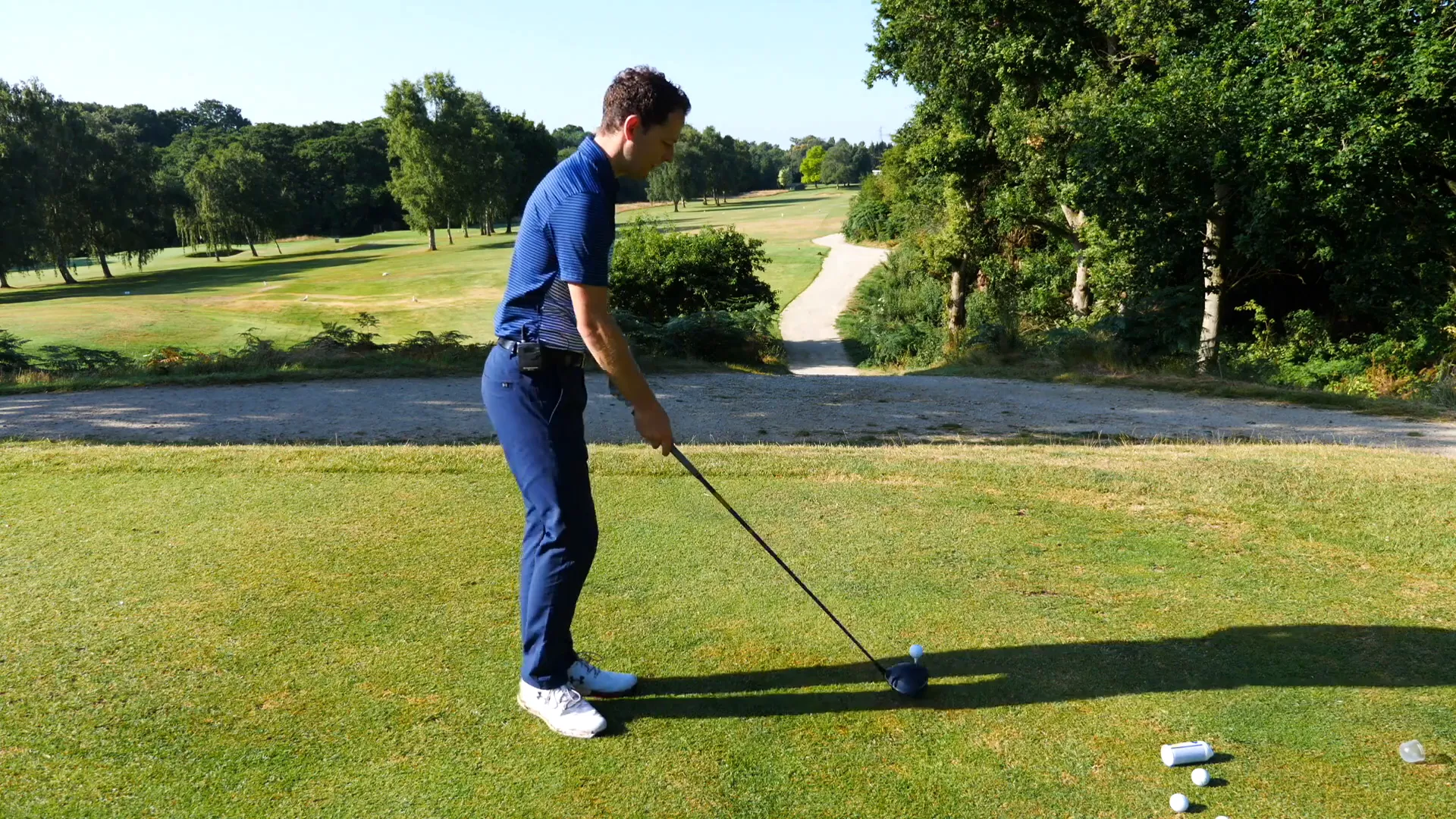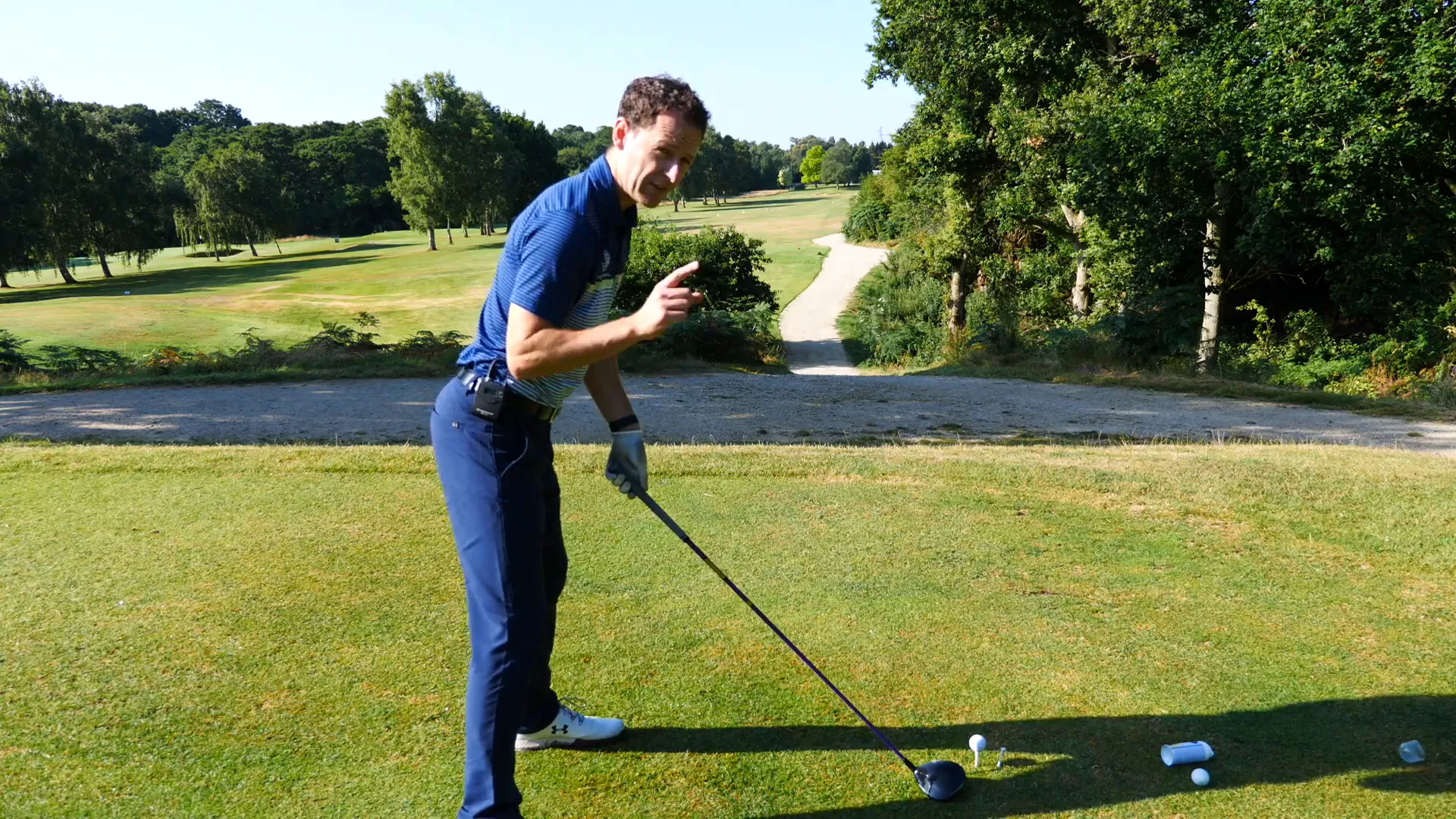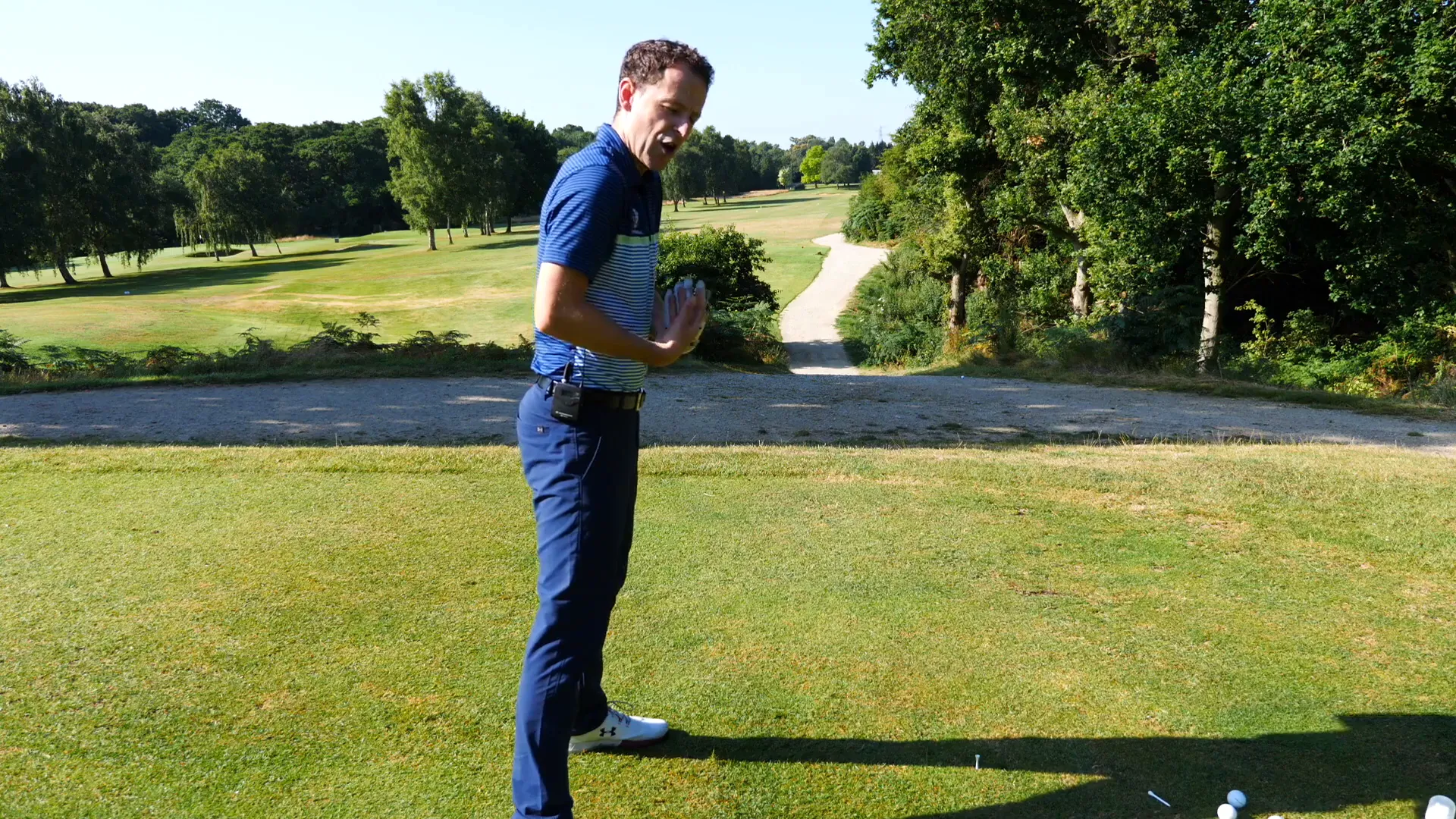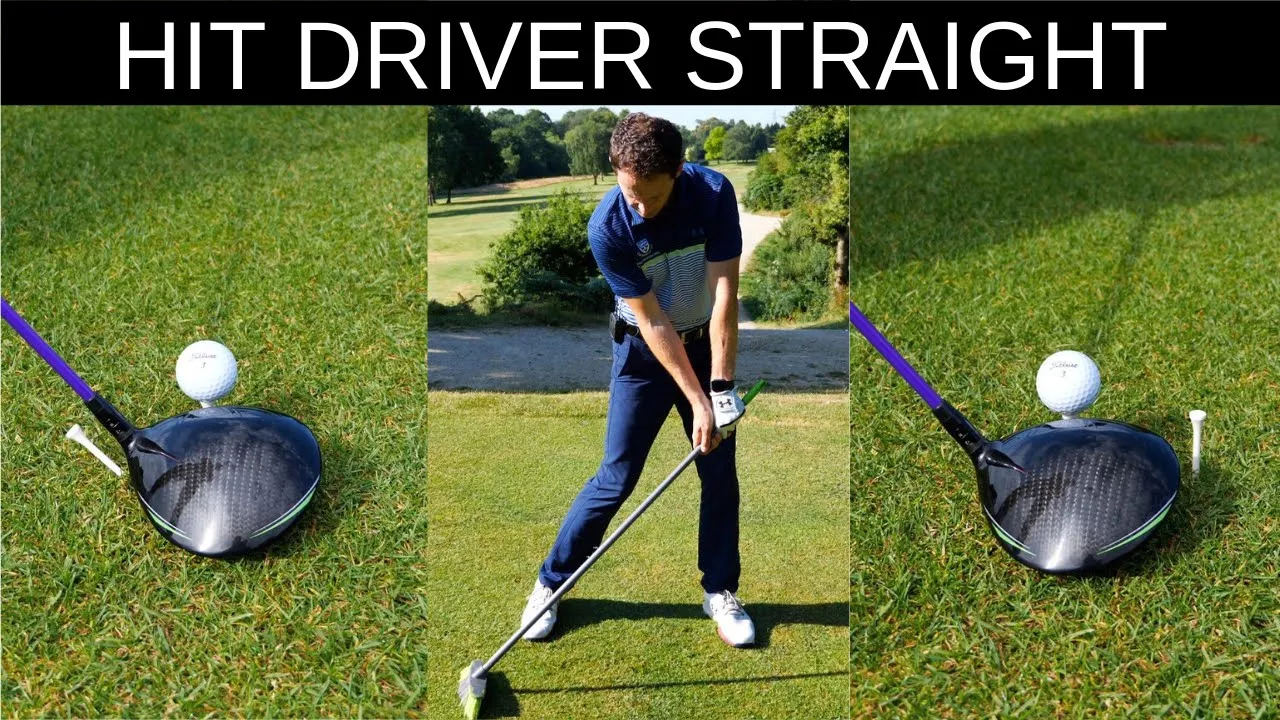Understanding the Importance of Center Contact
The first step in hitting your driver straight is learning to hit the ball in the center of the face reliably. This isn’t just about distance; it’s also about accuracy and spin. Hitting off the heel or toe can lead to unwanted spin and direction issues. To start, you need to identify where you are striking the ball on the clubface. Most experienced players are aware of their contact points, but many amateurs struggle with this.
One effective method to determine your strike location is to use foot spray powder. This powder can easily show where your contact is made on the clubface. Simply spray it on the face of your driver and take a few practice swings. After hitting a shot, you’ll see a pattern that indicates your striking tendency.

Once you’ve identified your strike pattern—whether it’s the neck or the toe—you can make adjustments. For example, if you find you’re hitting towards the neck of the club, place a tee peg just outside your ball. This will encourage you to make contact more towards the toe. Your body is an excellent problem solver and will adjust your swing to avoid the tee.

Squaring the Clubface
The next crucial element is learning to square the clubface at impact. Many golfers either slice or hook the ball because of an open or closed clubface during the swing. To achieve a straight shot, you must first work on squaring the clubface before worrying about the swing path.
If you tend to slice, your swing likely comes from outside to in. For right-handed golfers, this means the swing is directed to the left of the target. To counter this, focus on keeping the clubface square to your swing path. Initially, you might want to practice hitting shots where the ball goes straight left. This will help you feel what it’s like to have a square clubface at impact.
For those who hook the ball, the principle is similar. You’ll want to hit the ball straight to the right to learn the feel of a square clubface. Don’t worry about the direction initially; focus on the squareness of the clubface.
Adjusting Your Swing Path
Finally, let’s discuss the swing path. Many golfers struggle with their swing path, which can lead to either slicing or hooking. Slicers often have an overactive upper body and an underactive lower body, while hookers usually exhibit the opposite. To correct these issues, you need to focus on the appropriate body movements during your swing.
For slicers, a simple drill is to take a golf ball in your lead hand and turn it to face your target. As you perform your backswing, throw the ball down towards the ground, slightly behind where the ball would be at impact. This will help you maintain a more stable upper body during your swing.

Conversely, for hookers, you should focus on stabilizing your lower body while allowing your upper body to be more active through the swing. This can help correct the overactive lower body movement that often leads to hooks.
Putting It All Together
Now that we’ve covered the three key components—center contact, squaring the clubface, and adjusting your swing path—let’s summarize. Start by identifying where you’re hitting the ball on the clubface and make adjustments accordingly. Next, practice squaring the clubface by hitting shots that go straight left or right, depending on your tendency. Finally, focus on your body movements to ensure that you’re using the correct muscles during your swing.
Remember, hitting a driver straight takes time and practice. Don’t rush the process; work on one aspect at a time during your practice sessions. As you become more comfortable with each element, you’ll start to see improvements in your game.
Thanks for reading! If you found these tips helpful, consider sharing them with a fellow golfer. And remember, practice makes perfect. Keep working on your technique, and you’ll be hitting those drives straight down the fairway in no time. Have a great golfing week!


0 Comments